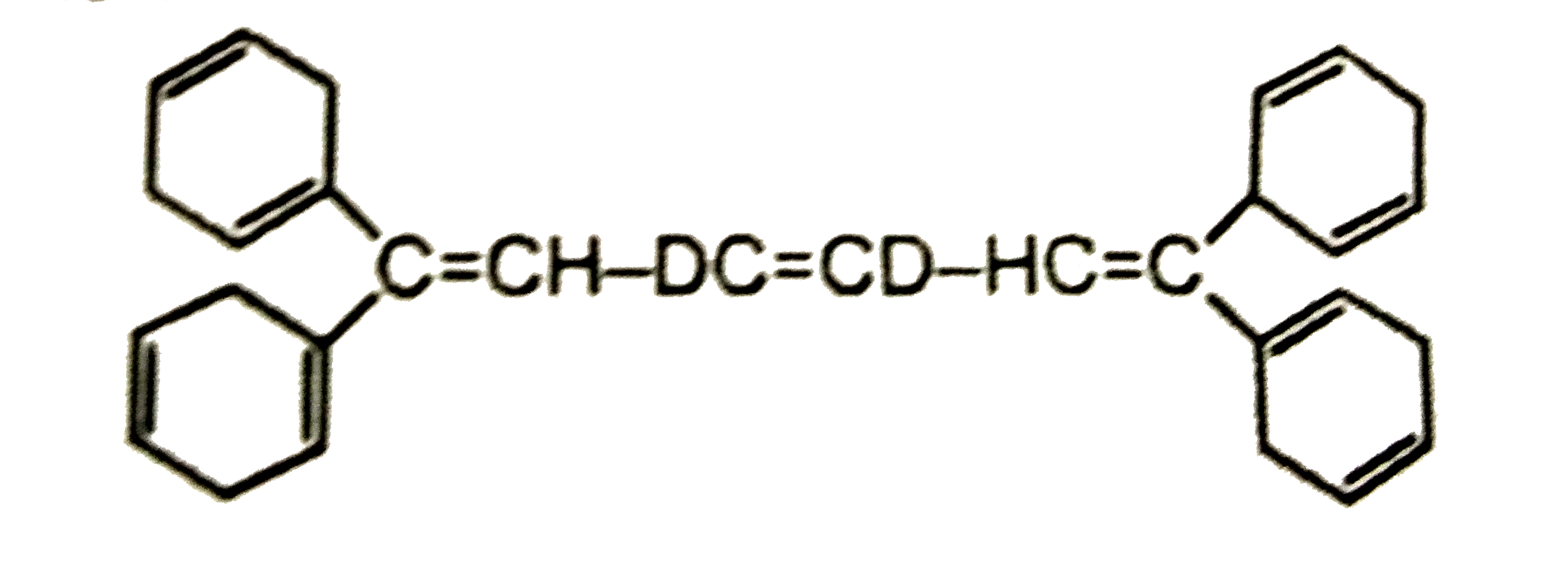The total number of possibel coordination isomer for the given compounds [Pt(NH3)(4)Br2][PtBr4] is .
2
4
5
3
The correct Answer is:B
To determine the total number of possible coordination isomers for the given compounds (Pt(NH3)4Br2) and (PtBr4), we will follow these steps:
Step 1: Identify the Coordination Compounds
We have two coordination compounds:
1. (Pt(NH3)4Br2) - This is a complex with 4 ammonia (NH3) ligands and 2 bromine (Br) ligands.
2. (PtBr4) - This is a complex with 4 bromine (Br) ligands.
Step 2: Understand Coordination Isomers
Coordination isomers occur when there is an interchange of ligands between the coordination spheres of the metal centers. In this case, we can exchange the ligands between the two complexes.
Step 3: Determine Possible Isomers
For the complex (Pt(NH3)4Br2), we can have the following coordination isomers by exchanging the ligands:
1. Isomer 1: (Pt(NH3)4Br2) - No exchange.
2. Isomer 2: (Pt(NH3)3Br3) - One NH3 ligand is replaced by Br.
3. Isomer 3: (Pt(NH3)2Br4) - Two NH3 ligands are replaced by Br.
4. Isomer 4: (Pt(NH3)Br5) - Three NH3 ligands are replaced by Br.
Step 4: Count the Isomers
From the above analysis, we can see that there are 4 distinct coordination isomers for the complex (Pt(NH3)4Br2).
Step 5: Conclusion
Thus, the total number of possible coordination isomers for the given compounds is 4.
Final Answer
The total number of possible coordination isomers for the given compounds (Pt(NH3)4Br2) and (PtBr4) is 4.
---
We have two coordination compounds:
1. (Pt(NH3)4Br2) - This is a complex with 4 ammonia (NH3) ligands and 2 bromine (Br) ligands.
2. (PtBr4) - This is a complex with 4 bromine (Br) ligands.
Coordination isomers occur when there is an interchange of ligands between the coordination spheres of the metal centers. In this case, we can exchange the ligands between the two complexes.
For the complex (Pt(NH3)4Br2), we can have the following coordination isomers by exchanging the ligands:
2. Isomer 2: (Pt(NH3)3Br3) - One NH3 ligand is replaced by Br.
3. Isomer 3: (Pt(NH3)2Br4) - Two NH3 ligands are replaced by Br.
4. Isomer 4: (Pt(NH3)Br5) - Three NH3 ligands are replaced by Br.
From the above analysis, we can see that there are 4 distinct coordination isomers for the complex (Pt(NH3)4Br2).
Thus, the total number of possible coordination isomers for the given compounds is 4.
The total number of possible coordination isomers for the given compounds (Pt(NH3)4Br2) and (PtBr4) is 4.
Topper's Solved these Questions
- COORDINATION COMPOUNDSBOOK - CENGAGE CHEMISTRY ENGLISHCHAPTER - COORDINATION COMPOUNDSEXERCISE - Exercises Single Correct (Hybridisation , Magnetic And Optical Properties )
18 Videos
- COORDINATION COMPOUNDSBOOK - CENGAGE CHEMISTRY ENGLISHCHAPTER - COORDINATION COMPOUNDSEXERCISE - Exercises Single Correct (Crystal Field Theory (Cft))
15 Videos
- COORDINATION COMPOUNDSBOOK - CENGAGE CHEMISTRY ENGLISHCHAPTER - COORDINATION COMPOUNDSEXERCISE - Exercises Single Correct (Naming And Terminology)
30 Videos
- CHEMICAL KINETICSBOOK - CENGAGE CHEMISTRY ENGLISHCHAPTER - CHEMICAL KINETICSEXERCISE - Archives Subjective
23 Videos
- D AND F BLOCK ELEMENTSBOOK - CENGAGE CHEMISTRY ENGLISHCHAPTER - D AND F BLOCK ELEMENTSEXERCISE - Archives Subjective
29 Videos
Similar Questions
The total number possible isomers for the complex compound [Cu(NH3)4[PtCI4] are
View SolutionTotal number of geometrical isomers in the given compound are

View SolutionThe total number possible isomers for the complex compound [CuII(NH3)4[PtIICI4] are
View SolutionTotal number of geometrical isomers in the given compound are :

View SolutionHow many more co-ordination isomers are possible of the compound [Cu(NH3)4][PtCl4] ?
View SolutionThe total possible co-ordination isomers for the following compounds respectively are
(i) [Co(en)3][Cr(C2O4)3]
(ii) [Cu(NH3)4][CuCl4]
(iii) [Ni(en)3][Co(NO2)6]
View SolutionGive the number of total possible ionisation isomers in [Pt(NH3)4CI2]Br2 .
View SolutionGive the total number of possible structural isomers of the compound II(Cu(NH3)4][IIPtCl4] .
View SolutionThe compounds [PtBr2(NH3)2] can form .
View SolutionThe correct name of ∣∣Pt(NH3)4Cl2∣∣|PtCl4| is
View Solution